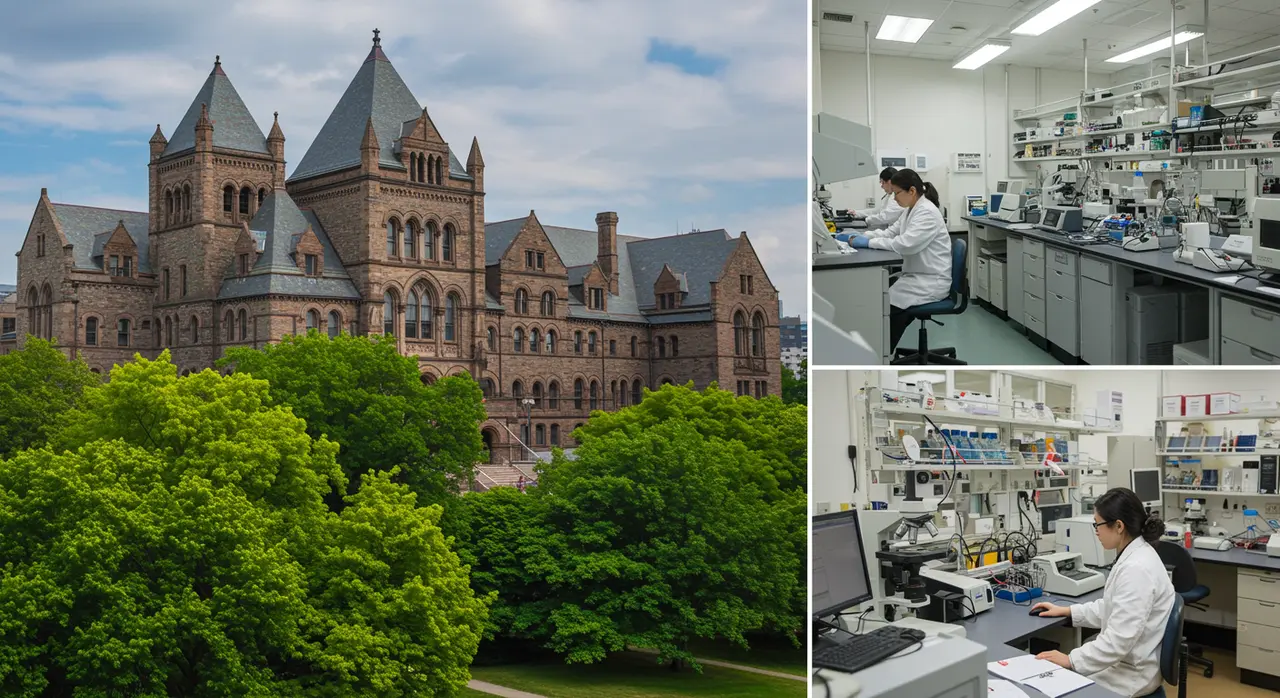University of Toronto Discovers Amyloids as New Agents of Heredity Beyond DNA
47 views
A groundbreaking revelation has emerged from the laboratories of the University of Toronto, where scientists have uncovered a startling new dimension to inheritance. Through their meticulous study of the microscopic worm Caenorhabditis elegans, researchers have identified amyloid-like protein structures as potential vectors for hereditary traits, challenging the long-held supremacy of DNA and RNA as the sole architects of inheritance. The findings, published in Nature Cell Biology, suggest these proteins may hold the key to understanding traits and disorders that have long eluded genetic explanation.
Rethinking Heredity: Amyloids as Silent Architects of Epigenetic Legacy
In the quiet depths of the laboratory, where science often ventures into the unknown, researchers turned their attention to herasomes—amyloid structures nestled within the cells of C. elegans. These proteins, typically associated with diseases like Alzheimer’s, revealed a capacity far beyond their notorious reputation. Acting as molecular scribes, they inscribed epigenetic changes that rippled through generations of worms, altering their biology in profound ways.

The study began with a simple yet revealing observation: over successive generations, the worms exhibited a gradual feminization, culminating in sterility. Intrigued by this peculiar transformation, scientists sought to uncover its origins. What they discovered was nothing short of revolutionary. The herasomes replicated themselves in a manner strikingly similar to DNA, passing on their structural information and triggering changes in the worms' reproductive biology. Unlike genetic mutations, these alterations were not encoded in the worms’ DNA but were instead driven by the amyloid-like proteins.
To validate their findings, researchers subjected the worms to heat-induced stress and selectively deactivated certain genes. These experiments confirmed that the herasomes were indeed the culprits behind the observed changes. The implications of this discovery extend far beyond the humble worm, hinting at a broader biological phenomenon that could reshape our understanding of inheritance.
The concept of amyloids as inheritance vectors challenges the traditional narrative of heredity, which has long been anchored in the interplay of DNA and RNA. While epigenetics has already expanded this narrative by introducing non-genetic factors like chemical modifications, the idea that proteins themselves can act as carriers of hereditary information ventures into uncharted territory. It raises the tantalizing possibility that traits, behaviors, and even diseases in humans might be influenced by mechanisms that lie outside the genetic code.
This revelation is particularly significant in the context of disorders that defy genetic explanation. Conditions like Alzheimer’s and Parkinson’s, which are often linked to amyloid accumulation, could now be viewed through the lens of inherited protein structures. The idea that amyloids might not only contribute to disease but also serve as conduits for inherited traits opens the door to a new era of biomedical research. It suggests that our genetic blueprint, while foundational, may not tell the whole story of our biological inheritance.
The implications extend beyond medicine, touching on broader questions about the nature of life itself. If proteins can act as hereditary agents, what does this mean for our understanding of evolution? Could these structures represent an ancient form of inheritance, predating the advent of DNA and RNA? The study of herasomes in C. elegans may offer glimpses into a primordial biological mechanism, one that has quietly persisted alongside more dominant forms of genetic transmission.
Moreover, the discovery invites reflection on the complexity of biological systems. It underscores the idea that life operates on multiple levels, with layers of information encoded not just in genes but in the very architecture of proteins. This multi-dimensional view of inheritance challenges reductionist approaches and calls for a more holistic understanding of biology.
As researchers delve deeper into the mysteries of amyloids, their work could pave the way for transformative advances in medicine and genetics. By unraveling the mechanisms by which these proteins influence inheritance, scientists may uncover new strategies for predicting and treating diseases. The study also raises intriguing ethical questions about the manipulation of protein-based inheritance, particularly in the context of human traits and behaviors.
In the end, the discovery of herasomes as inheritance vectors serves as a reminder of the boundless complexity of life. It highlights the importance of curiosity-driven research, which often leads to insights that transcend initial expectations. For the scientists at the University of Toronto, their work with C. elegans has illuminated a hidden dimension of biology, one that promises to reshape our understanding of inheritance and its role in shaping the tapestry of life.